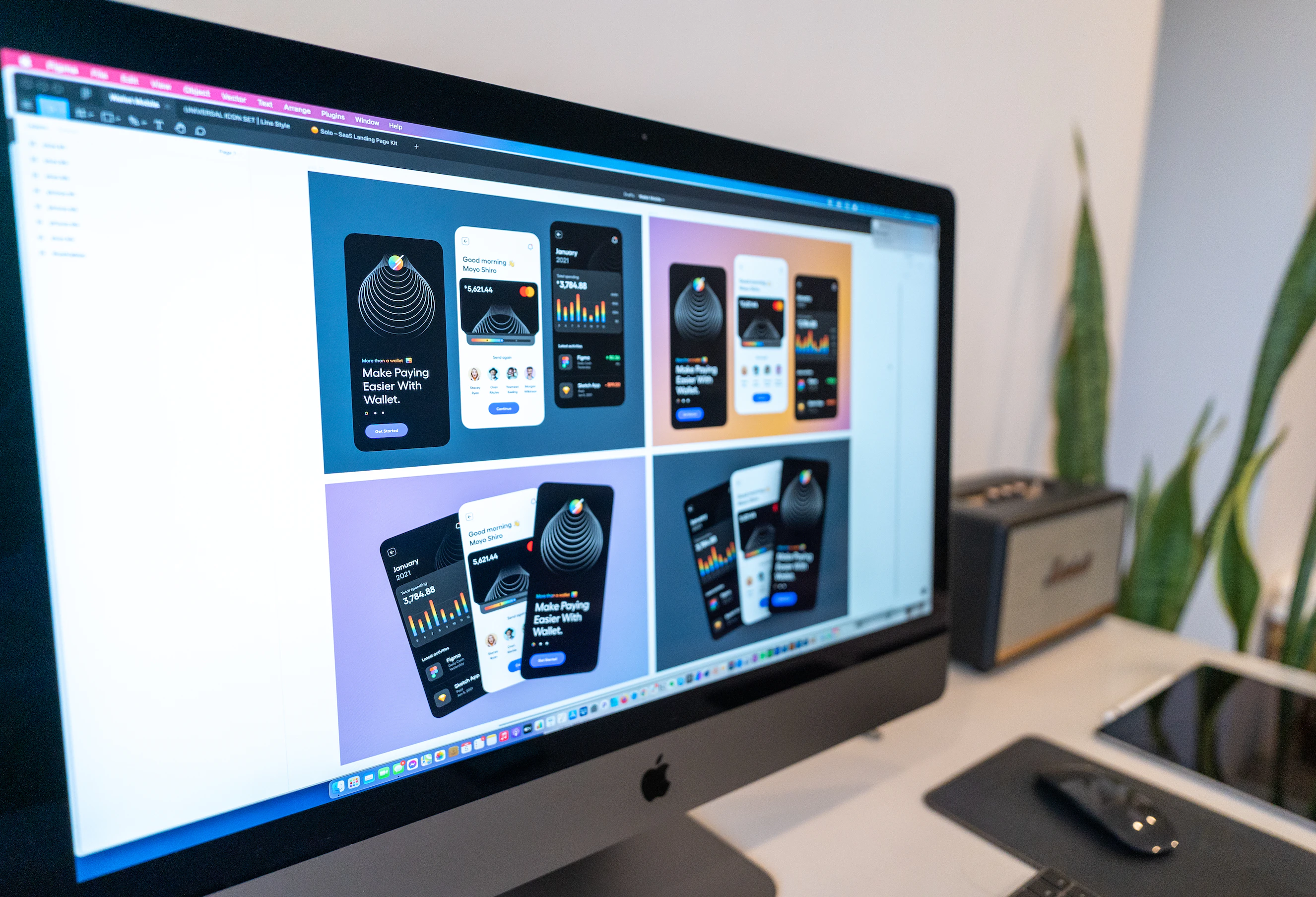
Responsive web design is a crucial part of any successful website design as it helps ensure all users have a great experience regardless of which device they use. A responsive website is a web design that automatically resizes to fit the screen size of the device it’s being viewed on.
Responsive web design is an approach to design websites so that they are optimized for various screen sizes. This is achieved using media queries, which enable the code to render differently depending on the size of a device’s viewport. As more and more people use their mobile devices to access websites, it has become increasingly important to design responsively. Responsive web design ensures that all users have a great experience regardless of what device they are using and can help improve website performance in search engine rankings.
In order to make their website appealing to as many people as possible, website designers have started designing them in a responsive way. This means that viewers will always be able to access the information you want them to see, no matter what type of device they’re accessing it from. It was first introduced in 2010 by Ethan Marcotte. It is a web design principle that has been around for more than 12 years now.
By having a responsive web design, businesses can ensure their online presence remains consistent across all platforms and helps them stay competitive in today’s digital landscape. It also allows companies to save time and money by no longer needing separate designs for different devices or platforms.

Web Design On Mobile Devices
When it comes to website design on mobile, responsive web design is an essential tool. It allows your website to adjust automatically to fit the size of any user’s device. Responsive web design helps ensure that all visitors are able to access and navigate through a website in an efficient and user-friendly way, regardless of their screen size or device type.
In addition to responsive design, mobile versions of websites can also be developed with different features tailored for mobile users. This ensures that users have a better experience when using their smartphones or tablets. Such features might include larger buttons for easier clicking on small screens and less content displayed at once so as not to overwhelm the user.
By implementing responsive design and creating a mobile version of your website, you can ensure that all your users have a positive experience when visiting your site and that the content is displayed properly regardless of their device. Such responsive design and mobile versions are necessary in order to improve user experience and engage more visitors.
What Are The Benefits Of Responsive Web Design?
Responsive web design has numerous benefits that can help take your website to the next level. It allows you to design responsively, meaning that it adjusts and responds differently depending on the device used to access it. This is achieved through the use of media queries, which allow specific design parameters to be set for different devices. By designing with responsive web design, websites become more user-friendly as they are optimized for mobile use.
Another major benefit of responsive design is improved search engine optimization (SEO). By making a website easily viewable on all devices, the content becomes much more accessible and therefore increases its rankings in search results. This gives your website higher visibility and can lead to increased traffic and engagement.
Finally, responsive web design can help save money and time in the long run due to its ability to design for all devices with one codebase. This helps reduce the need for a separate mobile website and cuts down development costs, as well as maintenance time.
All of these benefits make responsive web design an invaluable tool for businesses looking to achieve success online.

How to Make Your Site Mobile-Friendly?
A mobile-friendly website is a necessity for every website owner. Mobile devices account for 56% of website traffic, which indicates that more people prefer to access the internet using their smart devices. Making your website mobile-friendly is essential in order to provide a great user experience for visitors accessing your site on the go.
If you want to be successful online, you need to adapt to the latest technological trends. With more than half of internet users accessing websites via mobile devices, it’s crucial to prioritize mobile optimization.
You should start with a mobile-first approach if you want to make your website mobile-friendly. Creating a responsive web design for your website and adhering to our recommendations will ensure that you have a successful website.
WordPress or other content management systems (CMSs) provide helpful tools and plugins that can help you transform your desktop site into a mobile-friendly site. You can also recreate the design for mobile quickly by using a website builder, such as Elementor, to make it easier.
Here are a few of the many ways to make your website mobile-friendly:
- Start with a mobile-first approach
- Use a responsive theme
- Optimize the site’s speed
- Optimize button placement
- Optimize images
- Reduce the number of pop-ups
In order to ensure the future success of your website, we believe that by applying the tips mentioned above, you will have a greater chance of attracting better organic traffic as a result of the tips mentioned above.

How to Design Responsively In 5 Steps
Designing a responsive website is not difficult and can be done in five steps.
Fluid Layout
The first step is to determine what type of responsive design you will use. When it comes to responsive web design, there are two main options: fixed-width layouts and fluid layouts.
Fixed-width layouts require the user’s device (such as a mobile phone or tablet) to match up with the exact dimensions of your website in order for it to display correctly. This means that if the user’s device does not match exactly, they may experience issues such as the content being cut off or elements overlapping one another. Fluid layouts, however, use relative units such as percentages and ems to size elements, meaning that the website automatically resizes itself based on the user’s device.
Mobile Version
The second step is to create a mobile version of your responsive website. A mobile version allows users with smaller devices to access your content without having to zoom in or scroll horizontally. It also ensures that all of the content displays correctly without any overlap or cut-off portions. When creating a mobile version, it’s important to keep in mind the limited amount of real estate offered by smaller devices when compared to larger ones; you want your content to be clear and concise so as not to overwhelm users with too much text or too many images at once.
Flexible Content
The third step is to ensure that all elements of the responsive design are properly optimized for user experience. This includes making sure that all images, buttons, and other elements are correctly sized and scaled to the device they are being displayed on; this will help minimize load times and ensure a smooth browsing experience. It is also important to make sure that navigation is easy to use across devices by using menus and buttons that can be tapped or clicked with ease.
Test Your Responsive Website
The fourth step is to test your responsive website on multiple devices and browsers. This ensures that there are no bugs or issues with the responsive design when different users access it from their own devices. Testing helps you identify any areas of improvement before launching your responsive website.
Monitor User Engagement
Finally, the fifth step in creating a responsive website is to monitor and measure user engagement. This will help you understand how responsive design affects your website’s bounce rate, page views, and other metrics. Monitoring user engagement also helps you identify areas that need improvements, such as navigation, content layout, or any elements that may be causing users to leave the website prematurely.
Creating a responsive website can seem daunting but following these five steps will ensure that your responsive design is optimized for maximum user experience. By taking the time to consider responsive design when creating a website, you can be sure that it looks great and functions properly on any device.

5 Best WordPress Themes For Responsive Design?
When it comes to WordPress themes, best practices dictate that they should be responsive and enhanced for mobile. The use of responsive web design is becoming increasingly important as consumers access websites through more than just desktop computers – tablets, smartphones and other devices are now being used more often to browse the internet. A responsive WordPress theme can help ensure your website looks great no matter where it’s accessed from.
Here are the top 5 WordPress themes in our opinion:
Responsive WordPress themes are also easier to maintain than non-responsive ones as they minimize the need for updating content on different versions of a site. This can save you time and money when it comes to custom web development projects.
When selecting a responsive WordPress theme for your website, consider the following best practices:
- Make sure the theme is mobile-friendly
- Pay attention to how quickly the page loads
- Choose a theme that is compatible with your website’s plugins and other features
- Consider the design and layout options offered by the theme
- Check if the theme has been enhanced for SEO

5 Free Tools To Test If Your Website Is Responsive
Testing whether your website is responsive is best done on a mobile device. The best way to ensure that your site works well on mobile devices is to actually test it on various devices and sizes.
There are numerous best practices for developing a responsive website, including using dynamic scaling of images, creating multiple style sheets, and coding with media queries. You should also make sure you’re optimizing for mobile by eliminating unnecessary plugins, minifying code and creating finger-friendly links and buttons. Testing the mobile version of your website will help you to identify any potential issues before they become problems for users.
Here are 5 tools you can use to test your site’s responsiveness:

What Are Responsive Images?
Responsive images are a great way to ensure that your website is responsive and users have the best experience regardless of the device width. Responsive images allow you to dynamically adjust their size depending on the device width. This helps optimize page loading times by serving the most optimized image for each device, improving performance.
There are several ways to make responsive images. One way is to set a max width for the image and then use a CSS media query to adjust the image size based on device width. This allows you to serve smaller images on smaller devices, which helps with performance.
You can also use HTML5 srcset and sizes attributes, which allow you to specify different images for each device width. This allows you to serve different images based on device width, ensuring the most optimized image is always served.
Responsive images are an important tool for improving website performance and providing a great user experience across all devices. Make sure to keep an eye out for responsive design best practices when implementing images on your website.

What Is A Column Layout And How Does It Work?
A column layout works by using a container with a fixed max width and any number of columns inside. Common layouts are 3, 6 or 12 columns. Typically column layouts are created using HTML elements such as divs and the CSS float property. This makes it possible to structure content in specified areas on the page.
Columns can also be used to create dynamic designs that respond to different screen sizes or device orientations. This is done through the use of media queries. A media query allows web developers to target specific devices or conditions and apply different styling based on those parameters.
For example, a developer could set up column layouts that look differently on a tablet (3-6 columns) than they do on a desktop computer (6-12 columns). By understanding column layout techniques and using media queries, developers can create dynamic and engaging experiences for their users.
When deciding on column layouts for a website or application, designers must consider the size of the content first. When creating column layouts it’s important to keep in mind the max width of the container as well as how many columns will be needed to display all content correctly.

Conclusion
In conclusion, responsive design is an essential element of any successful website design. It ensures that users have a great experience regardless of what device they are using and can help businesses stay competitive in today’s digital landscape. By designing responsively, companies can save time and money while also improving their website performance in search engine rankings. It is important to design with responsiveness in mind if companies want to remain relevant in the digital age.

